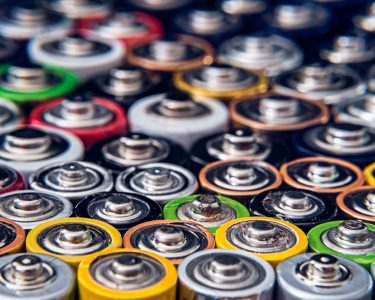Global Solar Panel Market Expected to Expand at an 8.1% CAGR from 2023 to 2032.
A new report by Allied Market Research reveals that the solar panel market, valued at $152.3 billion in 2022, is projected to reach $330.4 billion by 2032, with an expected CAGR of 8.1% from 2023 to 2032.
Solar panels, also referred to as photovoltaic (PV) panels or solar modules, are devices that transform sunlight into electrical energy through the photovoltaic effect. As essential components of solar energy systems, they play a pivotal role in generating electricity from sunlight.
China stands as the largest market for photovoltaic panels in the Asia-Pacific region, having made substantial investments in solar energy to become a major producer of solar panels.
In the residential sector, solar panels have been widely adopted as a cost-effective solution to reduce electricity bills and promote energy independence. Homeowners can install rooftop solar panels that convert sunlight into electricity for immediate use or store it in batteries.
The global solar panel market includes leading industry players such as Trina Solar Limited, Canadian Solar Inc., Jinko Solar Holding Co. Ltd., JA Solar Technology Co., Ltd, Yingli Solar, SunPower Corporation, RenewSys India Pvt, Panasonic Corporation, REC Solar Holdings AS, and LG Electronics.
Excess power generated during the day can be fed back into the grid, allowing homeowners to earn credits or compensation through net metering programs. Additionally, solar-powered water heaters have gained popularity as an efficient way to provide hot water for residential use.
The market is segmented by type, including crystalline silicon, thin film, and others; by grid type, into on-grid and off-grid; and by technology, into photovoltaic systems and concentrated solar power systems.
Applications are further categorized into residential, commercial, and industrial sectors, while end-use industries include electricity generation, lighting, heating, and charging.
Key Aspects of Solar Panels
Photovoltaic Effect: Solar panels consist of multiple solar cells made with semiconductor materials, usually silicon. When sunlight hits these cells, it excites electrons, generating an electric current through a process known as the photovoltaic effect, which directly converts sunlight into electricity.
Solar Cell Types: Solar cells come in various types, including monocrystalline, polycrystalline, and thin-film, each with unique efficiency levels and characteristics.
- Monocrystalline Solar Cells: Made from a single silicon crystal, these cells are known for their high efficiency and sleek appearance.
- Polycrystalline Solar Cells: These cells are created from multiple silicon fragments, resulting in slightly lower efficiency but generally at a lower cost.
- Thin-Film Solar Cells: Using different semiconductor materials, thin-film panels offer flexibility and are lighter, though generally less efficient than crystalline panels.
- Efficiency: Solar panel efficiency measures how effectively panels convert sunlight into electricity, typically ranging from 15% to 22%, depending on panel type and manufacturer.
Capacity (Wattage): Solar panels are rated in watts (W) or kilowatts (kW), which indicate their power output. Capacity depends on the panel’s size and efficiency.
Environmental Benefits: Solar panels provide clean, renewable energy that reduces greenhouse gas emissions and air pollutants, helping combat climate change.
Inverter: Since solar panels generate direct current (DC), inverters are used to convert DC into alternating current (AC) suitable for residential and commercial use.
Technological Advancements: Ongoing innovation in solar panel technology is enhancing efficiency, durability, and versatility, which is expected to drive global market growth. Thin-film technology, in particular, uses thinner photovoltaic materials, enabling flexibility, lightweight design, and integration into various surfaces.
Historical Trends in the Solar Panel Industry
- 1839: French physicist Alexandre-Edmond Becquerel discovers the photovoltaic effect, laying the foundation for modern solar panel development.
- 2013: Solar panel efficiency improves, with companies like SunPower and Panasonic achieving over 20% efficiency through advanced materials and technologies.
- 2014: The International Space Station (ISS) is equipped with high-performance photovoltaic arrays that supply power and charge its batteries. These arrays were deployed over multiple missions.
- 2020s: Solar power sees continued global expansion as a leading renewable energy source.
- Researchers focus on improving efficiency, energy storage solutions, and integrating solar energy into smart grids.
For more insights, you can view the full report or request customization options here and access an in-depth report here.

